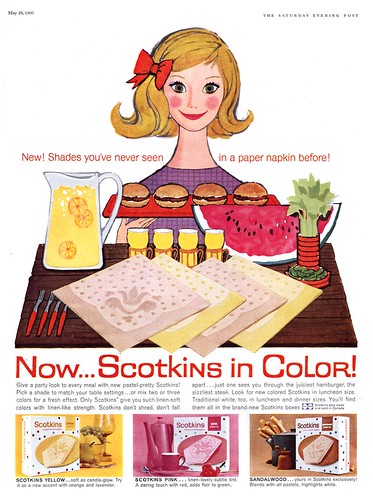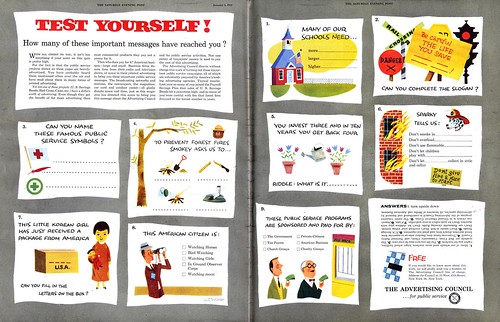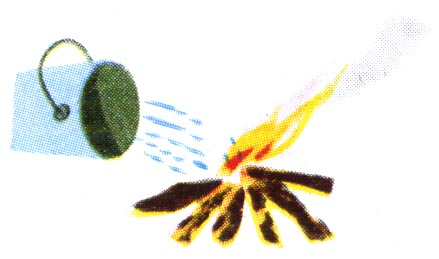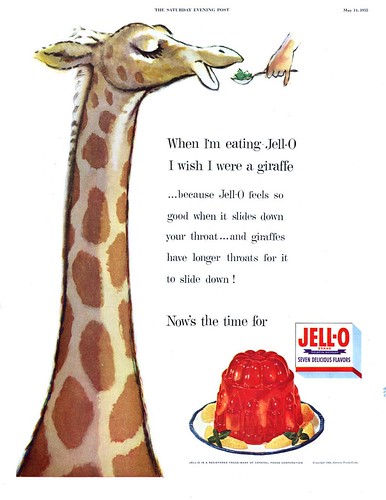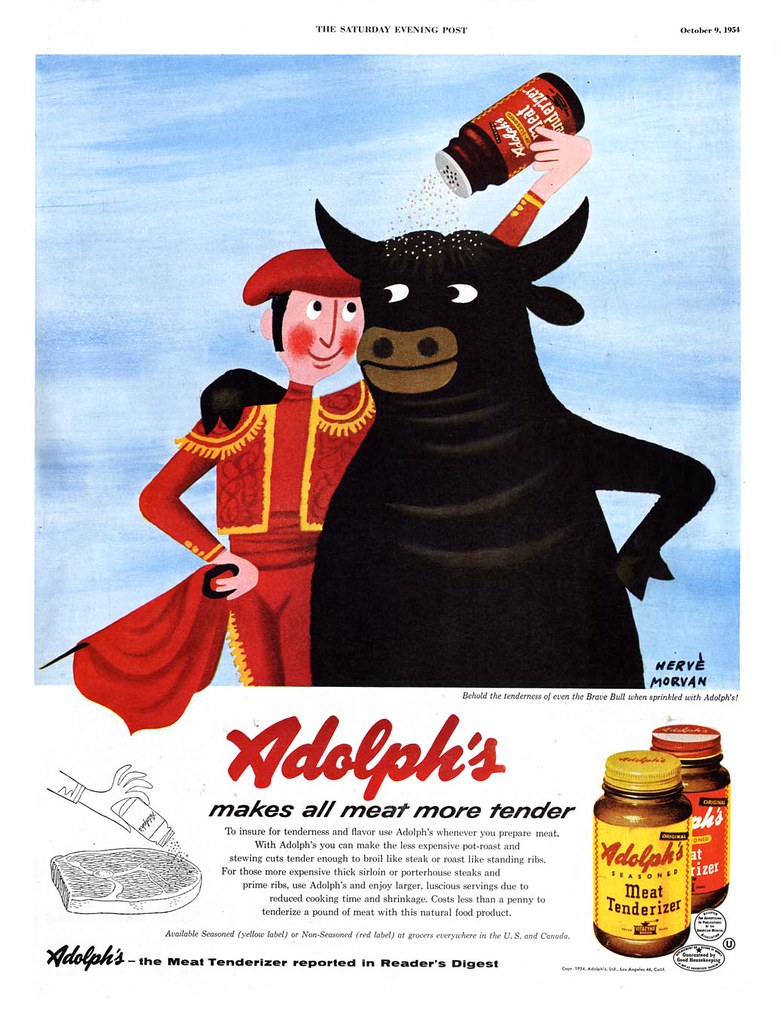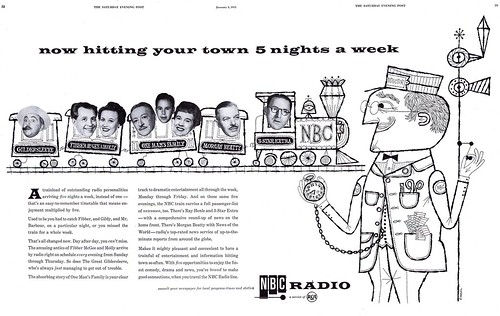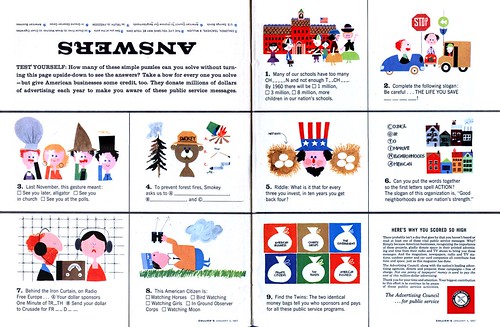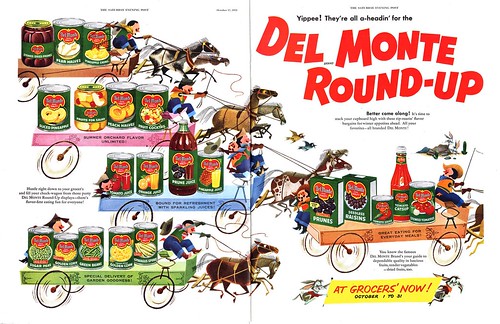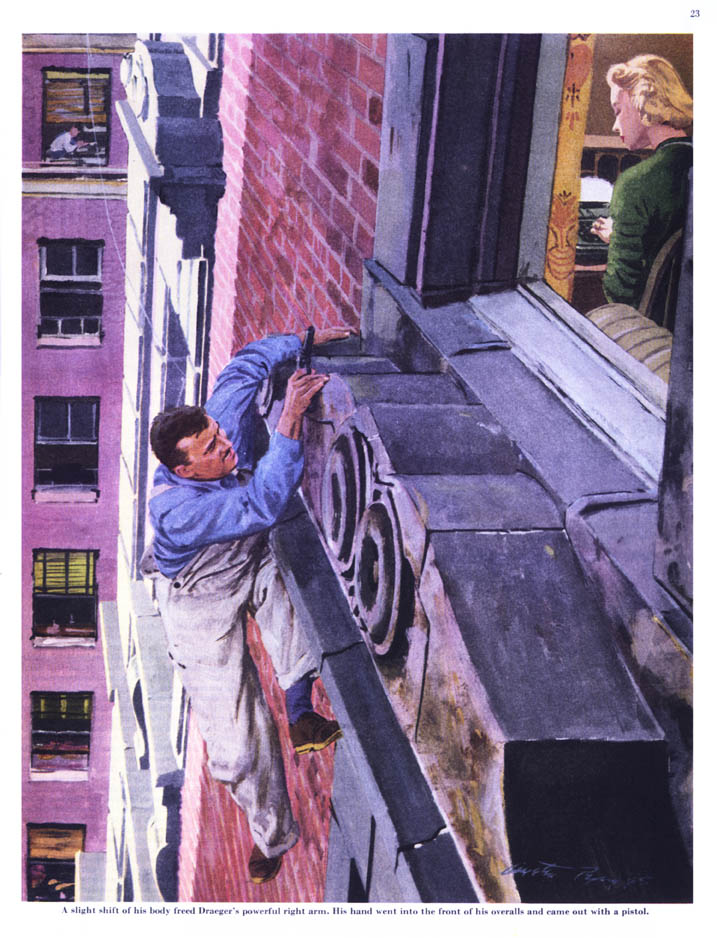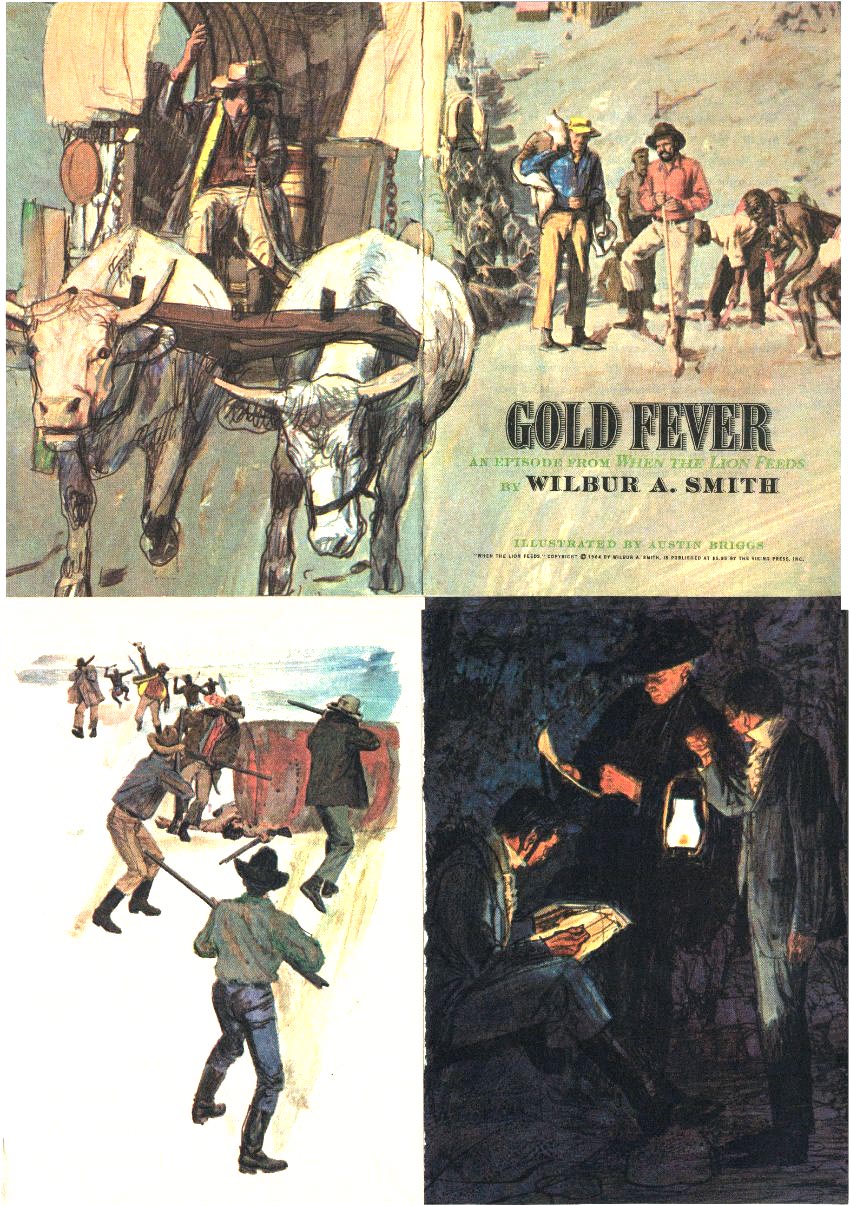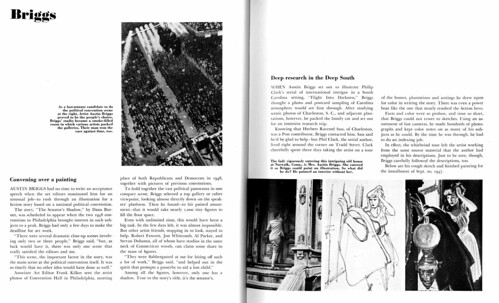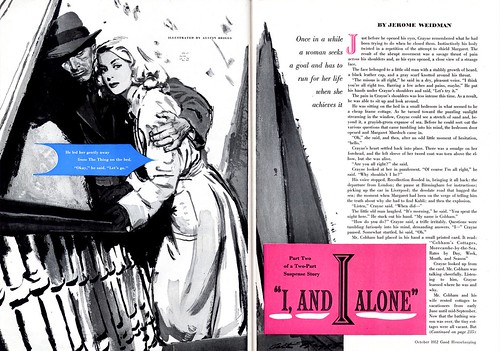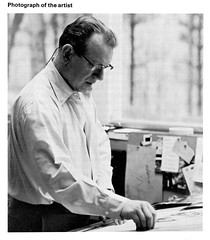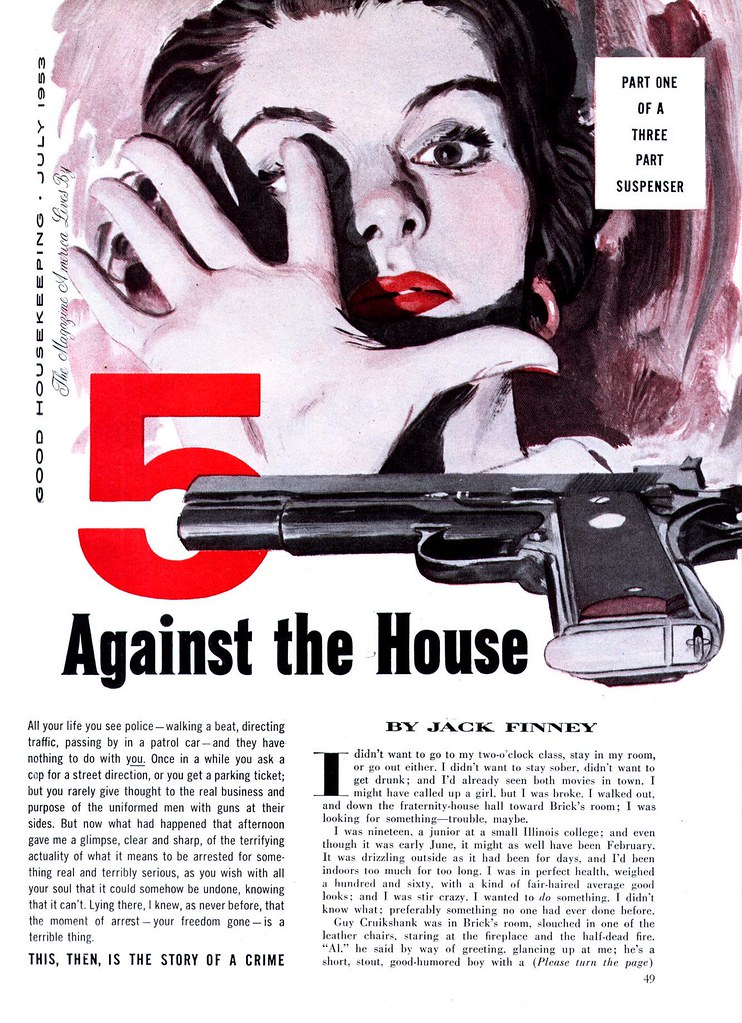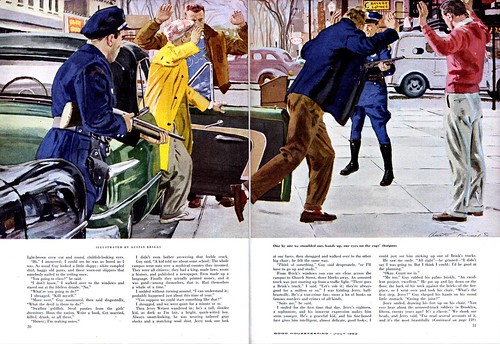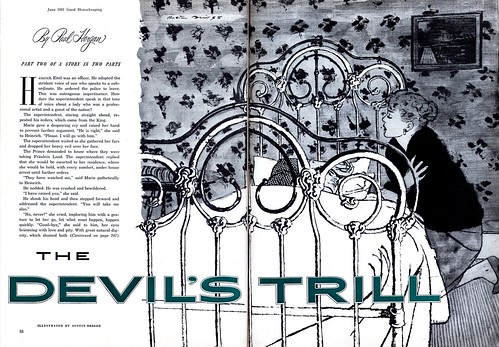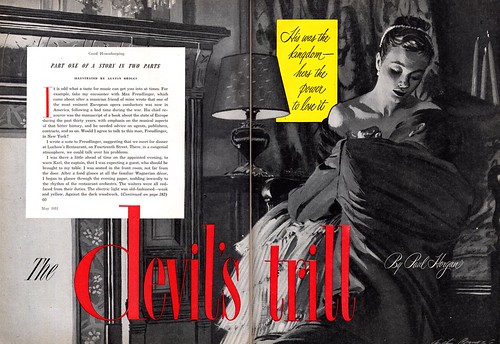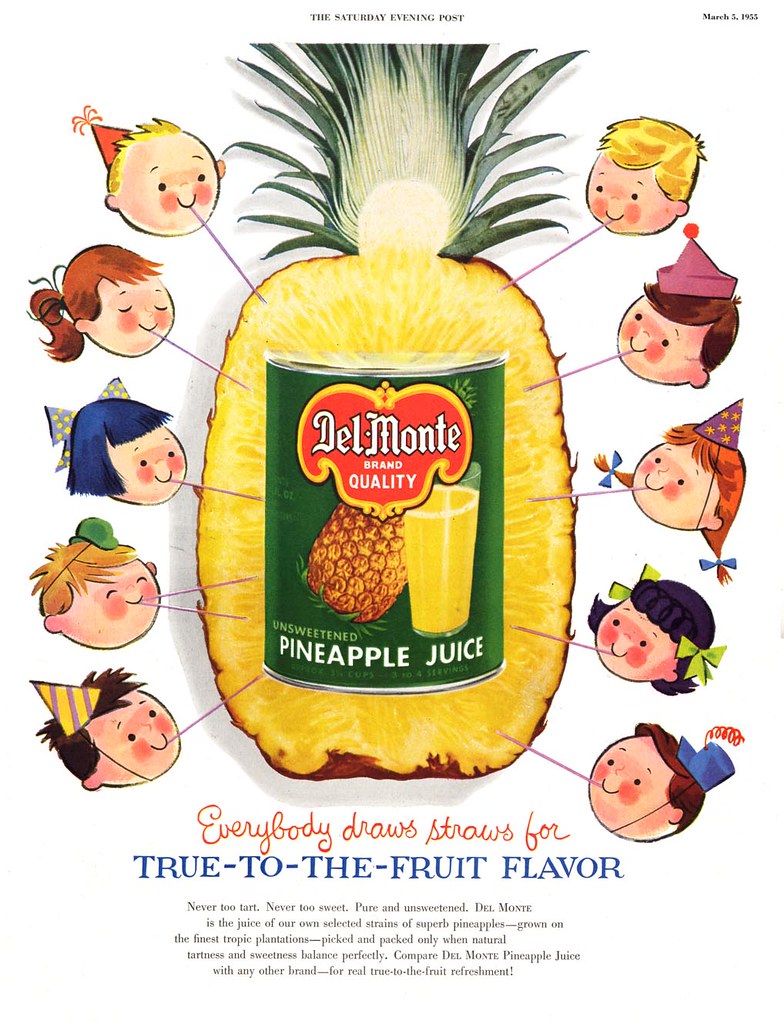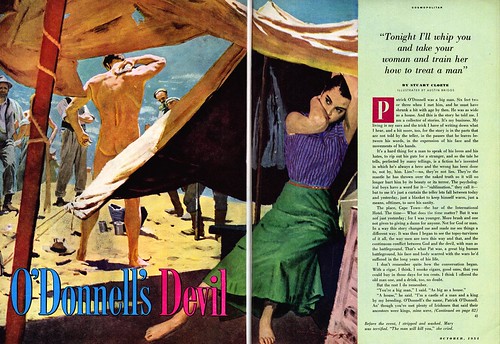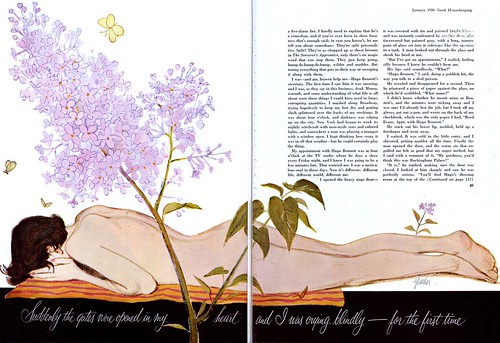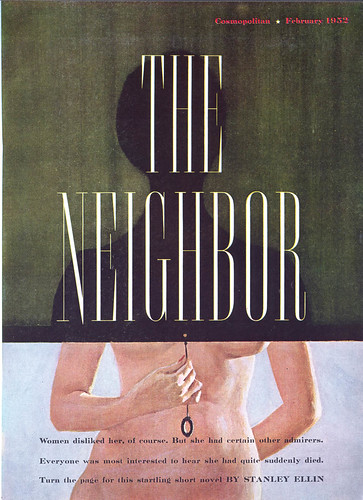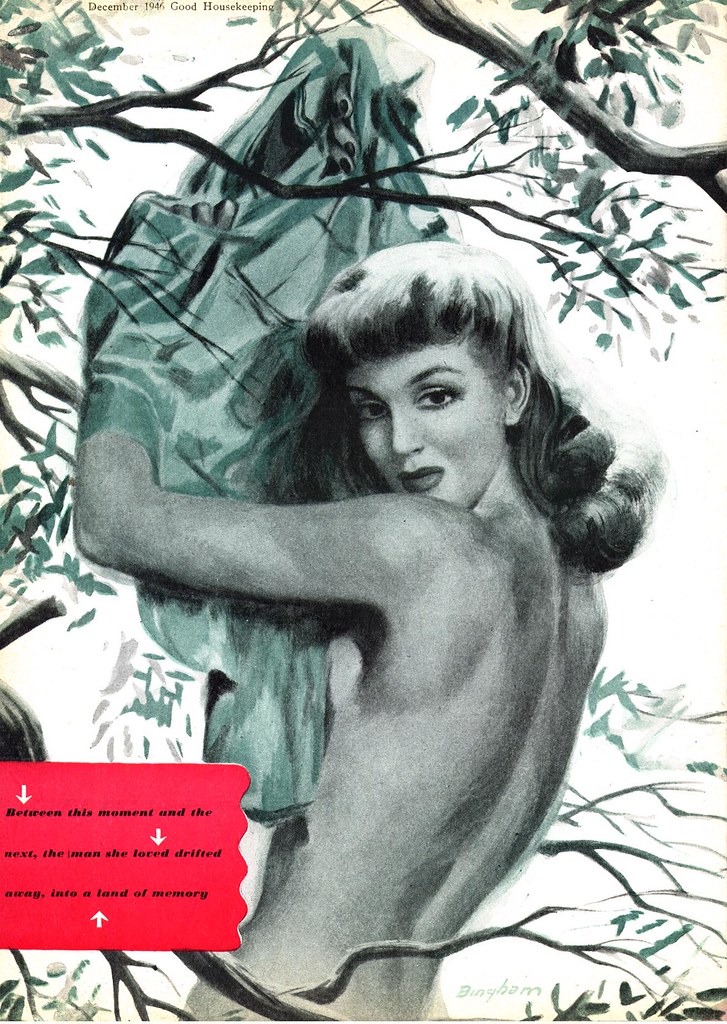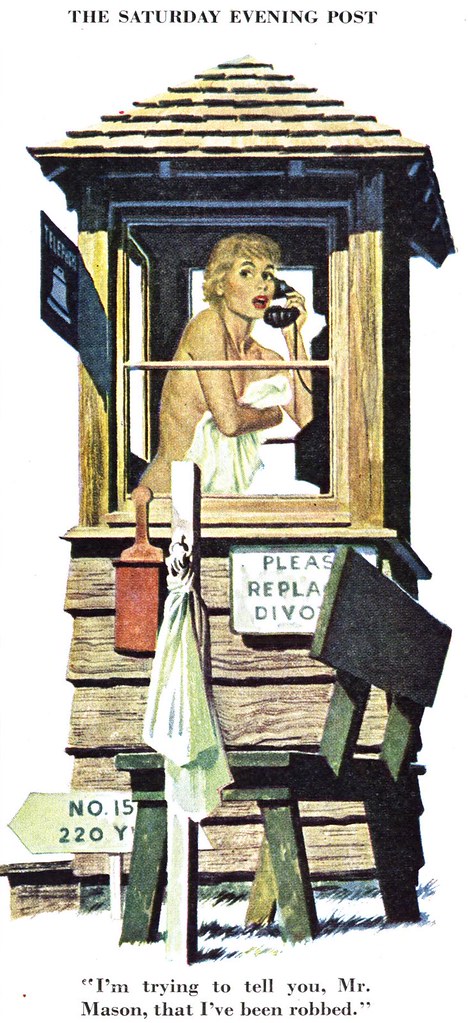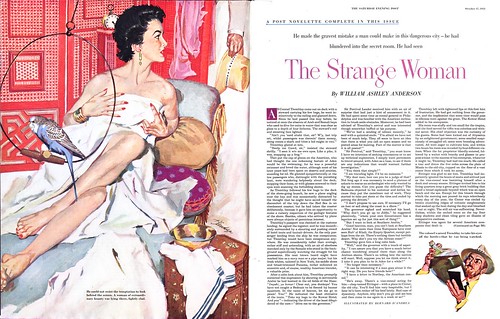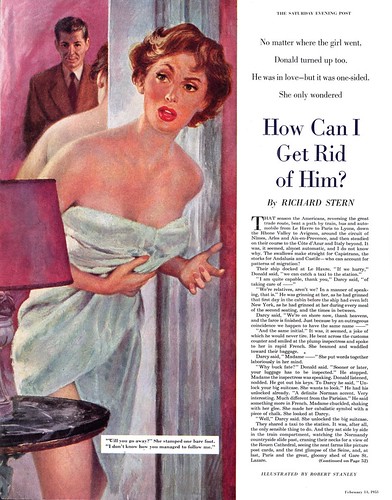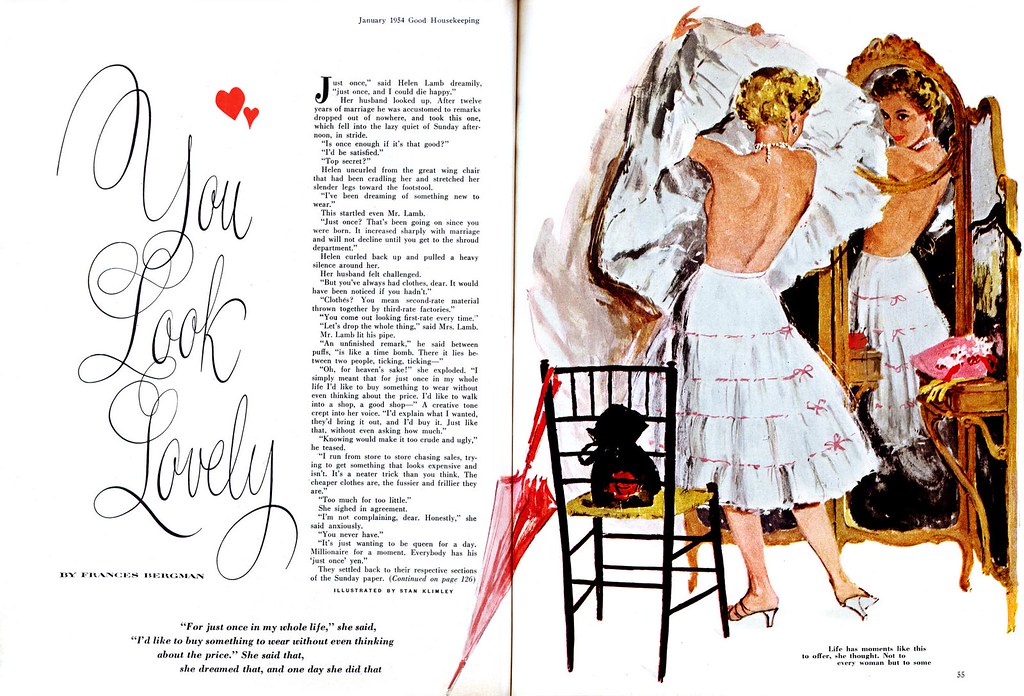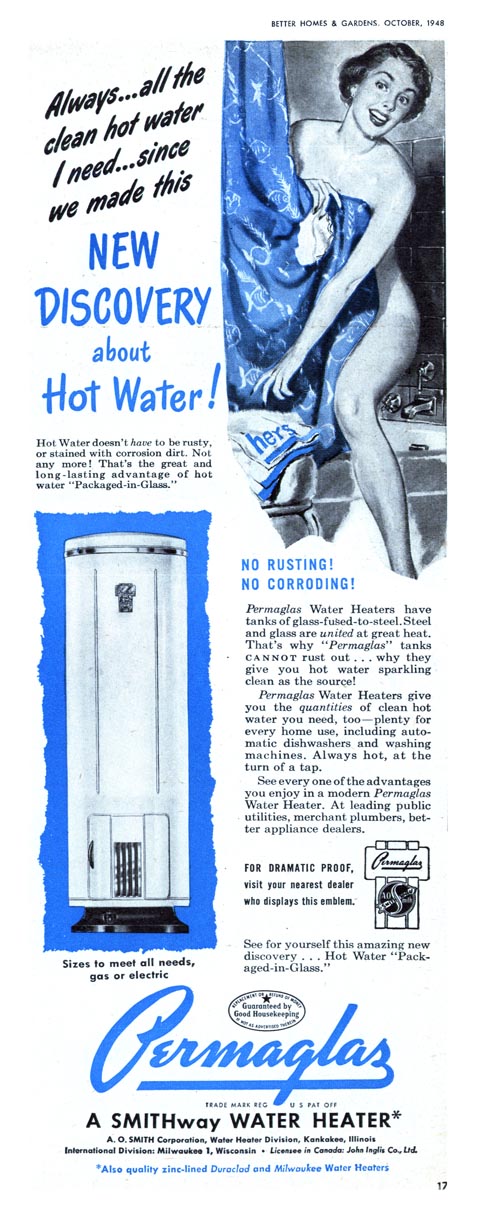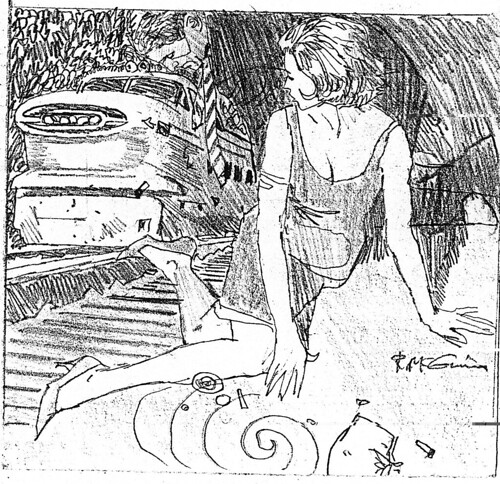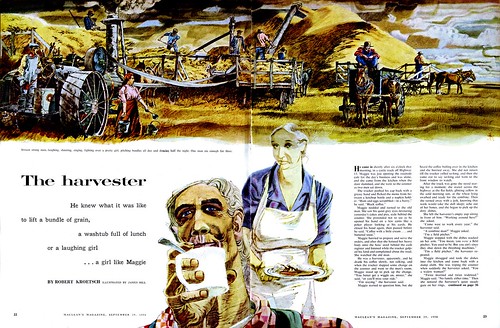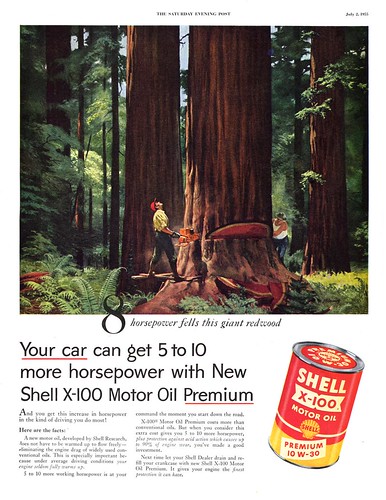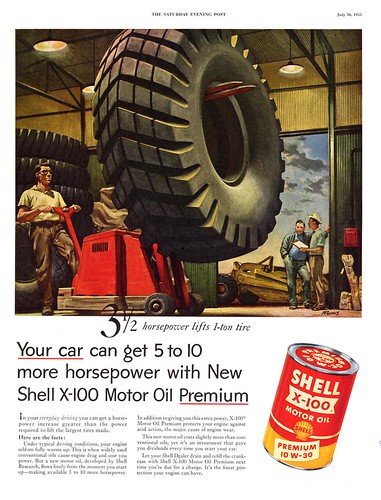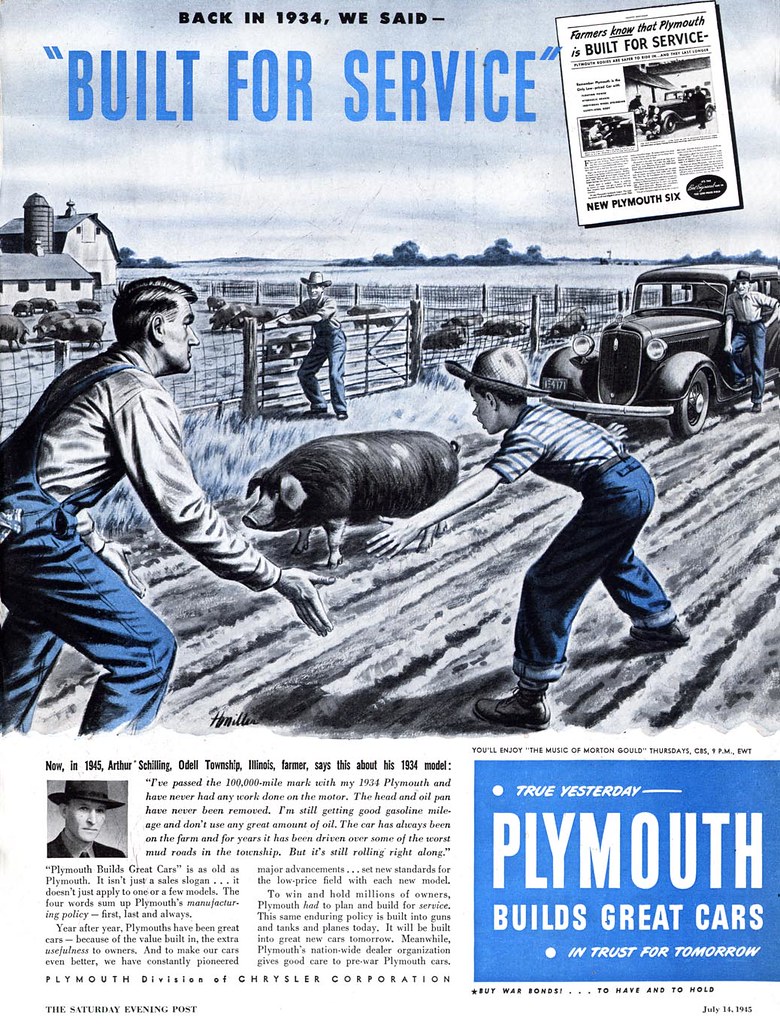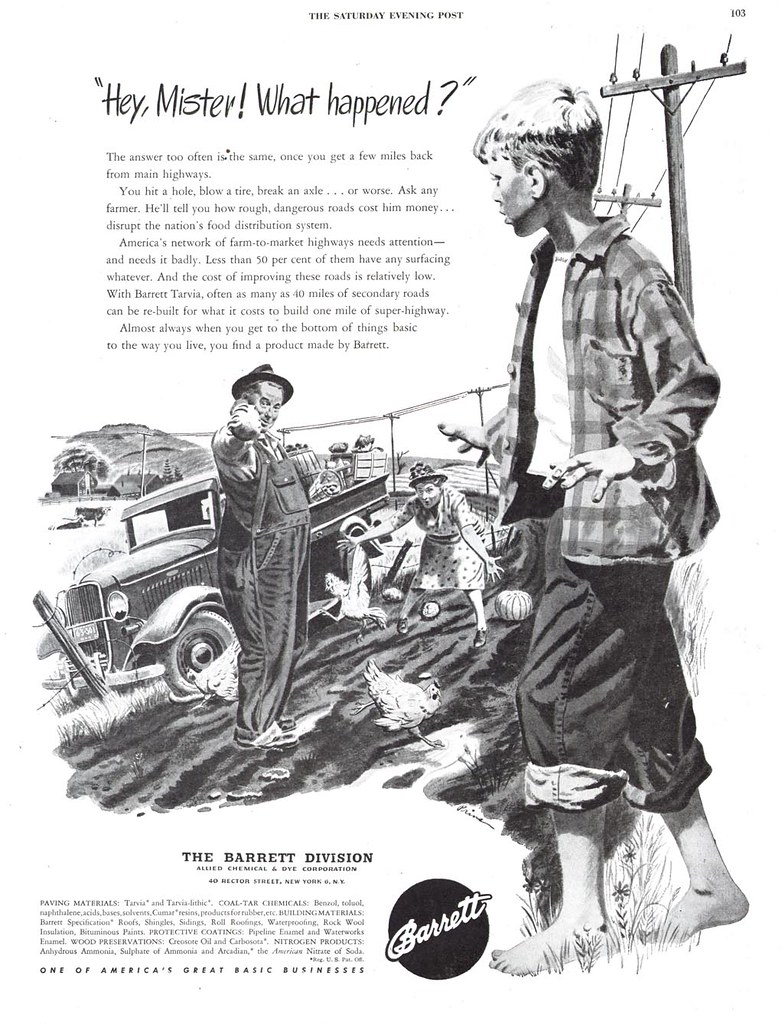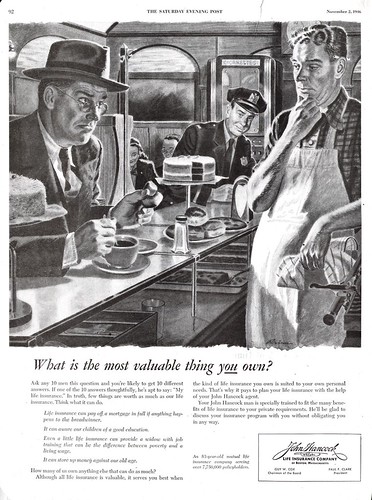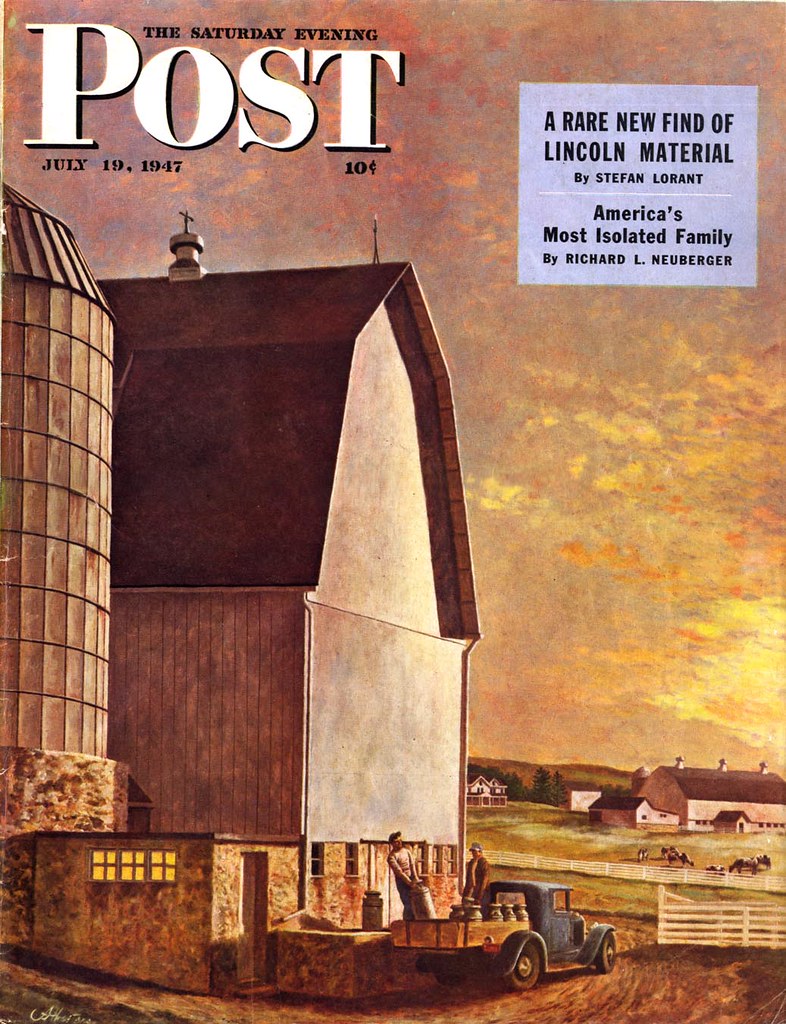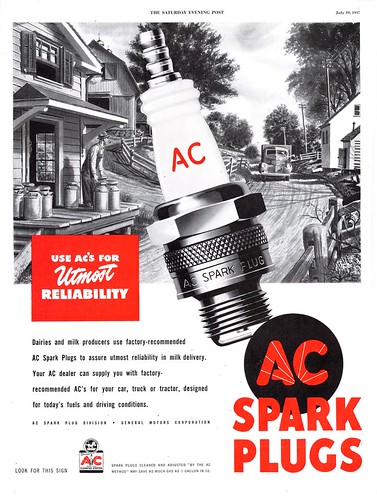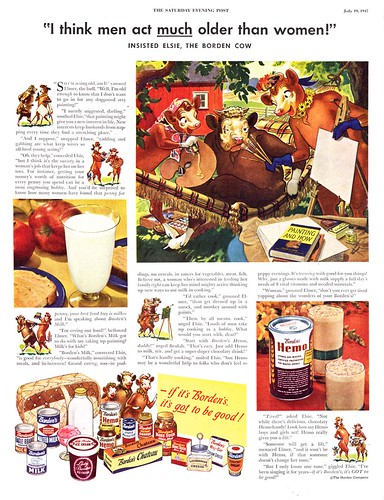I'd like to start off by giving Leif a big hearty thank you for allowing me offer my humble two cents to this week's Today's Inspiration theme. I think that this is a great idea and would love to see Leif do this more often. Like the others before me, I am in no way a true "historian" when it comes to this sort of thing. I simply love the illustrations and artwork from the mid-century era and love to talk about it. So, here goes....

I collect quirky ephemera from the 40's, 50's, and 60's. The more quirky, the better. One of my favorite things to collect are cookbooks, booklets, pamphlets, and any sort of paper item that is home and kitchen related that showcases fun and jovial illustrations. Most of these illustrations are small, but too the point -- simply adding illustrative garnish to what are usually dull and boring subjects: listings of ingredients and measurements for a multitude of recipes, or step-by-step guides for mundane household errands. And with what could be a synergistic element with the cookbooks and such, ads and articles in women's and family magazines often employed these same type of illustrations.
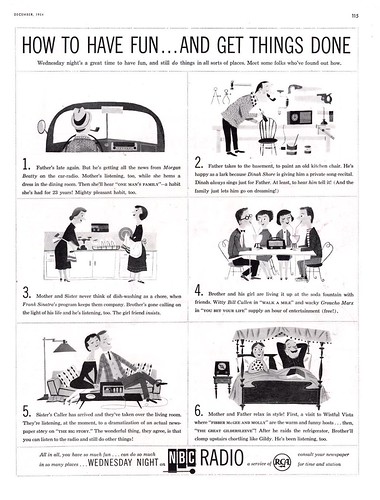
It's so easy to look back on all this and find these ads and cookbooks very amusing because of the naive and simplistic nature that the artwork
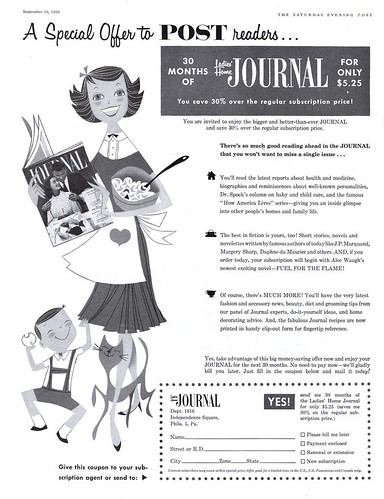
seemed to be trying to convey for that time. Every woman (and the occasional male chef) is grinning from ear to ear, completely full of gusto and glee and oh so very happy to be slaving away for their brood. And to top it off, every woman is wearing her favorite tea length dress while immersed with said slaving. Something to be said for style, I guess.

Looking back, it almost seems like subtle propaganda with ad agencies and household product manufacturers trying to make the "typical" housewife job seem easier than it really was. To take her mind off the fact that it's WORK that she's doing and that this is her destiny -- she should be HAPPY and filled with JOY that she's doing all this for her dear ol' hubby and munchkins. (A thankless job, no less.) Propagating an idealized home life with no worries, no stains, no odors to worry about.
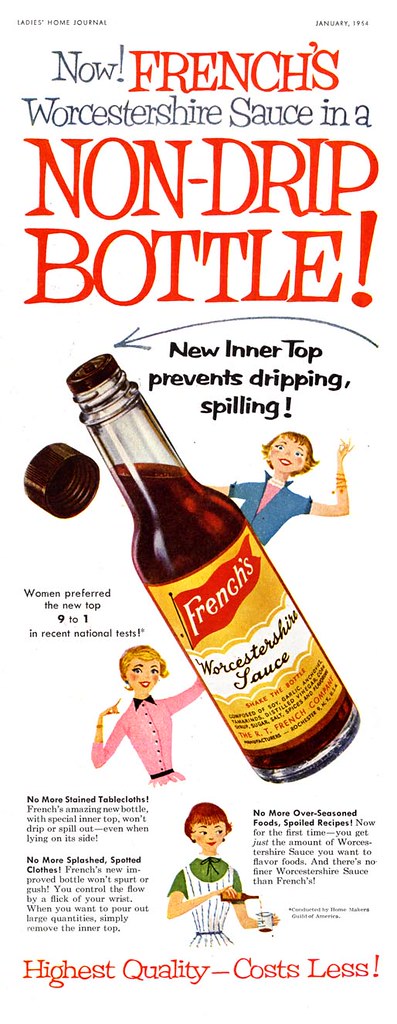
There are some great examples here with the simple shapes, stylized characters, and childbook-like gaiety in all the poses and colors (even the black and white ads). But why on earth feature storybook illustrative styles into kitchen and home advertisements? Why, to lure in the next generation, of course. Making cooking and cleaning seem fun was a way to pull little Jane into the mix -- hook, line and sinker. Start 'em out early, I guess.
You can see some of my own ephemera collection in my Flickr sets:
Fun Ephemera, and
1956 Home & Garden Decorating Book. Also, if you're into mid-century children's book illustrators, be sure to stop on by
The Retro Kid. It's a swell thing.
